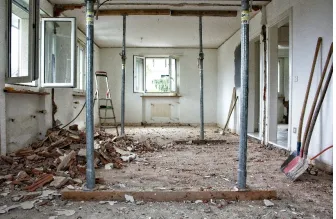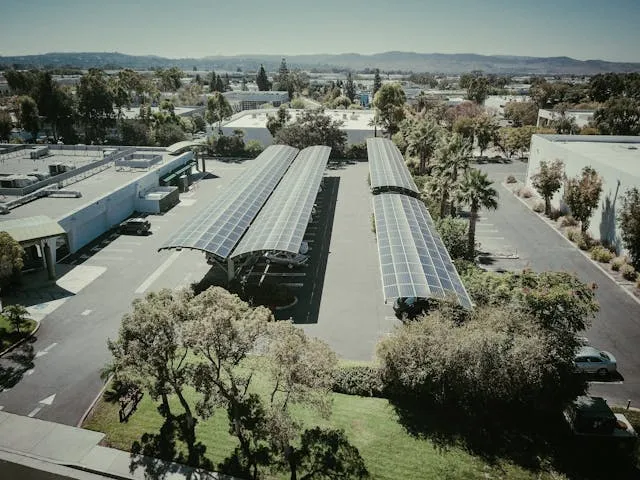From Small Repairs to Major Renovations: How to Prioritize Commercial Building Needs
Managing a commercial property means constantly balancing maintenance demands with budget constraints. Property managers and business owners face an ongoing challenge: determining which building needs require immediate attention and which can wait. The difference between a minor repair and a major renovation isn’t always obvious, yet making the wrong call can lead to costly consequences down the road.
Also Read: Beating the Humidity: Fun and Fresh Ways to Enjoy Summer Indoors
Understanding how to prioritize commercial building needs requires a strategic approach that considers safety, functionality, financial impact, and long-term value.
From the heat and storms of Austin, TX, to commercial districts across the country, whether you’re dealing with a leaking roof, outdated HVAC systems, or cosmetic updates, knowing where to allocate resources can mean the difference between a thriving property and one that struggles to retain tenants.
Addressing Visible Damage and Aesthetic Concerns
The appearance of your commercial building speaks volumes about your business. First impressions matter tremendously when attracting and retaining tenants or customers. Peeling paint, faded exteriors, and worn surfaces can signal neglect and drive away potential clients before they even step inside.
Interior and exterior paint maintenance represents one of the most cost-effective ways to refresh a commercial property’s appearance. Fresh paint protects surfaces from moisture damage, extends the life of building materials, and creates an inviting atmosphere.
When planning painting projects, if you’re looking for professional painters Austin TX, has many qualified options who can ensure quality results that stand up to heavy commercial use and weather exposure.
Evaluating Safety and Code Compliance Issues
Safety concerns should always top your priority list. Any building issue that poses immediate danger to occupants demands swift action, regardless of cost. This includes structural damage, electrical hazards, gas leaks, fire safety system failures, and accessibility violations.
Code compliance issues fall into a similar category. Building codes exist to protect occupants and ensure properties meet minimum safety standards. Failing to address code violations can result in fines, legal liability, and forced closures.
During regular inspections, document any items that don’t meet current codes and create a remediation plan with clear timelines.
Consider conducting annual safety audits that examine fire suppression systems, emergency exits, electrical panels, structural integrity, and accessibility features. These preventive assessments help identify problems before they become emergencies.
Assessing Structural and System Failures
Structural problems and critical system failures require immediate attention because they tend to worsen rapidly. A small roof leak today becomes extensive water damage tomorrow. A struggling HVAC system that limps along becomes a complete failure during peak summer or winter months.
Prioritize structural issues like foundation cracks, roof damage, water infiltration, and compromised load-bearing elements. These problems rarely improve on their own and typically escalate in severity and cost the longer they’re ignored.
Water damage deserves special attention because it creates secondary problems, including mold growth, wood rot, and electrical hazards.
Major building systems, including HVAC, plumbing, and electrical infrastructure, should be evaluated based on age, efficiency, and reliability. A system approaching the end of its expected lifespan that requires frequent repairs often costs more to maintain than to replace.
Creating a Financial Framework for Decision-Making
Developing a clear financial strategy helps remove emotion from prioritization decisions. Start by categorizing building needs into three buckets: immediate action required, address within six months, and plan for the next budget cycle.
Immediate action items include safety hazards, code violations, and failures that halt business operations. These warrant emergency funding if necessary. The six-month category covers deteriorating conditions that will become urgent if left unaddressed, such as aging equipment showing signs of failure or minor water intrusion that could expand.
The long-term planning category includes improvements that enhance value or efficiency but aren’t time-sensitive.
Establish a capital reserve fund specifically for building maintenance and improvements. Industry experts recommend setting aside 1-2% of the property’s replacement value annually for ongoing maintenance, with additional reserves for major renovations.
This proactive approach prevents scrambling for funds when emergencies arise.
Implementing a Systematic Inspection Schedule
A comprehensive inspection program forms the foundation of effective prioritization. Regular assessments help you spot problems early when they’re easier and cheaper to fix. Create a detailed inspection schedule that covers all building systems and components throughout the year.
Monthly walk-throughs should examine obvious issues like lighting problems, minor leaks, and cosmetic damage. Quarterly inspections can dive deeper into HVAC performance, plumbing fixtures, and exterior conditions. Annual professional assessments should cover roofing, structural elements, major systems, and life safety equipment.
Document everything thoroughly with photos, maintenance logs, and repair histories. This documentation helps track recurring problems, justify budget requests, and demonstrate due diligence for insurance and legal purposes. Digital maintenance management systems can streamline this process and send automatic reminders for scheduled inspections.
Prioritizing commercial building needs isn’t simply about addressing the loudest complaint or the most visible problem. It requires balancing immediate safety concerns with long-term strategic planning, always keeping financial realities in view.
By systematically evaluating safety issues, structural integrity, system performance, and aesthetic impact, property managers can make informed decisions that protect both building occupants and property value.







